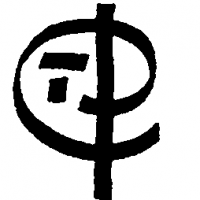讯息: 129
语言: English
PrimeMinisterK (显示个人资料) 2020年4月10日上午8:18:58
nornen:Here a quick and incomplete overview of the accusative in Esperanto:I'm literally rubbing my head right now because it hurts.
1) Direct object.
The direct object of a transitive verb is marked with accusative when it (its head) is a noun or a pronoun: Mi batas mian amikon. Mi batas vin.
2) Direction.
2.1) Direction with a preposition
Local prepositions with the accusative denote direction: en la domo = in the house; en la domon = into the house.
2.2) Direction of local adverbs
Local adverbs like tie, kie, etc mark accusative to denote direction: tie = there; tien = thither; kie = where; kien = whither
2.3) Direction of locatives
Some noun derive a locative by the -e ending: hejmo = a home; hejme = at home; arbaro = a forest; arbare = in a forest.
Those locatives can add -n to denote direction: hejmen = (going) home; arbaren = (in)to the forest
3.4) Direction of nouns
This usage is archaic and not used very much nowadays: Mi vojaĝis Parizon = I travelled to Paris.
3) Measure
In this case the accusative is generally followed by an adjective that describes a measurable quantity: longa, larĝa, vasta, pezo, alta, etc.
Mia auto estas tri metrojn longa. = My car is three meters long.
Mi trovis du kilogramojn pezan terpomon. = I found a two kilogramme (heavy) potato.
- - - -
When not to use the accusative:
1) The subject of an intransitive verb
No matter whether the subject of an intransitive verb is an agent (I run) or a patient (I fall), you never mark it with the accusative: Mi kuras, mi falas.
2) After non-local prepositions
For example "mi havas multe da problemoj" or "mi parolas pri leono".
3) Direct objects that are not nouns or pronouns
For example "mi vidis multe", "mi volas kuri" or "mi vidis dek".
4) Predicate nouns
For example "mi estas sana" or "mi pentris ŝin nuda".
I will . . . study over this. Thanks for taking the time to provide it.
It actually looks like the situation is worse than I thought LOL.
This I get: Mi ĵetas la pilkon.
Okay, fine. Understood. But once you have to mark up nouns, pronouns, some of the correlatives (I guess some of those are pronouns too or something), and adjectives, not just with Ns but also with Js I begin to feel defeated after a while.
But I will study this and try to figure it out.
RiotNrrd (显示个人资料) 2020年4月10日下午3:26:29
In English, when we have a series of adjectives, we always put them in the same order. Always. We will always say "the big red ball" and never say "the red big ball". And, our spoken adjective orders will be the same even if we have six adjectives in a row. How do we know to do this? Because we follow an adjective order rule which is so absurdly complex that it practically makes you laugh to actually see it. What is that rule? I don't know. It's really complicated. I'd have to look it up. But I follow it to the letter, and so do you. Because that's the way we learned to speak English.
Having to throw a -j on the end of adjectives because they have to agree with the nouns you are also -j-ifiying, and tacking on an additional -n to everything because it's the object and not the subject, becomes second nature very quickly. It sounds complicated if you break it down, but in practice it just all comes together because your brain knows the patterns and provides the right endings at the right times.
Except that right now your brain doesn't know the patterns. That's why it sounds complicated.
RiotNrrd (显示个人资料) 2020年4月10日下午3:39:34
Some verbs have only a subject. "I run" is therefore a complete sentence, with no more needed. Verbs like this are called intransitive.
In Esperanto, you can turn an adjective into a verb. So "ŝi estas bela" can be restated as "ŝi belas". Adjective-to-verbs like this are always intransitive. This also explains why there is no -n on "ŝi estas bela". There is no object in this sentence: only a subject.
Some verbs require a direct object. "I take the money." "I take" on its own is incomplete. It requires an object (what am I taking? The money). Verbs like this are transitive.
Some verbs require both a direct and an indirect object. "I give the book to the clerk". "I give" by itself is incomplete, but "I give the book" (adding in the direct object) is also incomplete. I don't know that Esperanto has a separate term for this configuration. "Give" is still considered transitive in this case.
A transitive verb acts on an object. An intransitive verb acts on or describes the subject.
In English, transitivity can be a little fuzzy. If I am boiling, that means I am hot. If I am boiling water, it means I am making some water hot. Note that the verb is the same either way in English.
Esperanto draws a very bright line between transitive and intransitive verbs. So in Esperanto, "mi bolas" means I am hot, but "mi boligas la akvon" means I am making the water hot. The addition of the -ig changes the transitivity of boli, and is necessary, because boli on its own is intransitive.
So, how do you know which verbs are transitive and which are intransitive? Heh. In many cases it's obvious. "Kuri" logically can't take an object, for example. But in a lot of cases it could go either way, and you just have to memorize which is which. There are no reliable patterns to follow.
So this is an area of Esperanto where the memory load is higher than in English. In English if you need a verb to be transitive, you just use it transitively. In Esperanto you have to remember which form to use on a verb-by-verb basis.
nornen (显示个人资料) 2020年4月10日下午6:51:20
The pattern-matching behaviour of our brains is both a blessing and a curse. The curse is that we see patterns where there are none, and tend to mistake e.g. correlation for causation. The curse also haunts us while studying foreign languages. We are used to the patterns of "our" language, we might not even know which these patterns are (like the adjective order you mentioned), and inadvertently we try to apply the same pattern to the new language. This can go so far that we treat foreign languages as mere relexifications of our own.
The distinction between intransitive and transitive verbs seems to be a real bugger for many English speakers, as far as I can see from the recurrent threads on this forum. And I can completely understand it, taking into consideration that in English many verbs can be both things at the same time (as you also mentioned). I think it is quite helpful that Esperanto makes a clear distinction for the sake of clarity. However, other languages take this whole thing yet one step (or ten steps) further. (The following is just for fun and not in order to confuse PrimeMinisterK even more):
In Esperanto, as in most indoeuropean languages, intransitive verbs can indeed take direct objects. Those objects are called cognate (or inner) objects and they most be either cognate to the verb or come at least from the same semantic field. Both "dance" and "danci" are intransitive: "I danced the dog" and "mi dancis hundon" don't make any sense. However "I danced the last waltz" and "mi dancis la lastan valcon" seem perfectly fine although the intransitive verbs govern a direct object. In other languages an intransitive verb is intransitive and that's that, no cognate objects, no nothing, end of discussion.
In Esperanto, as in most indoeuropean languages, transitive verbs can take a direct object but they can also show up without one. This might make it difficult to spot whether a verb is transitive or not. For example, if I read "Mi kuris.", I see that there is no direct object and I therefore conclude -correctly- that "kuri" is intransitive. If I read "La patro sidas kaj legas.", I see that none of the verbs has a direct object and I therefore conclude -incorrectly- that both verbs are intransitive. Other language don't allow for this. Exempli gratia, most (if not all) amerindian language must make a morphological change to the transitive verb in order to use it intransitively without an object. In those languages "mi legas" and "mi legas libron" contain two different inflections of the verb "legi".
In Esperanto, as in most indoeuropean languages, intransitive verbs always mark their only argument, the subject, in the same way, no matter whether the subject is an agent or patient. Generally with nominative which is less marked than other cases. "Mi saltas" and "mi falas" have the same form of the subject, but other languages make a difference between agent subjects (of unergative verbs like salti) and patient subjects (of unaccusative verbs like fali). In those languages "mi saltas" and "mi falas" have different subjects.
I think that Esperanto found quite the sweet spot between complete verbal chaos on the one side, and a very complex verbal system on the other side. We have a clear distinction between intransitive and transitive verbs which is fine. We can't spot whether a verb is transitive or intransitive just by looking at it (because of its ending, its vowels, its appearance in general), but this won't kill us and dictionaries will help us. We have causatives (-ig-) and anticausatives (-iĝ-) to juggle transitivity around, but we don't need to care about antipassives, unaccusativity and unergativity to name a few.
PrimeMinisterK (显示个人资料) 2020年4月11日上午9:50:07
RiotNrrd:The brain is a remarkable pattern matching machine.That's a pretty interesting observation regarding "the big red ball." Hmm. I don't remember ever learning any kind of rule for adjectives, but it's certainly true that "the red big ball" doesn't sound right and I'd never say it.
In English, when we have a series of adjectives, we always put them in the same order. Always. We will always say "the big red ball" and never say "the red big ball". And, our spoken adjective orders will be the same even if we have six adjectives in a row. How do we know to do this? Because we follow an adjective order rule which is so absurdly complex that it practically makes you laugh to actually see it. What is that rule? I don't know. It's really complicated. I'd have to look it up. But I follow it to the letter, and so do you. Because that's the way we learned to speak English.
Having to throw a -j on the end of adjectives because they have to agree with the nouns you are also -j-ifiying, and tacking on an additional -n to everything because it's the object and not the subject, becomes second nature very quickly. It sounds complicated if you break it down, but in practice it just all comes together because your brain knows the patterns and provides the right endings at the right times.
Except that right now your brain doesn't know the patterns. That's why it sounds complicated.
I'm sure you're right about patterns. My fear is that I won't be able to pick them up because I don't have enough opportunities to actually USE the language, nor a teacher to correct me when I make a mistake and don't even know it. Children at least not only have brains like a sponge, but they are dropped into a world where the language is constantly being spoken around them, and they are forced to speak it themselves.
But hopefully in time I can figure it out. I am looking into picking up a tutor on italki.com.
PrimeMinisterK (显示个人资料) 2020年4月11日上午9:55:37
RiotNrrd:Transitivity in a nutshell:Thanks for the explanation. I will have to think on that.
Some verbs have only a subject. "I run" is therefore a complete sentence, with no more needed. Verbs like this are called intransitive.
In Esperanto, you can turn an adjective into a verb. So "ŝi estas bela" can be restated as "ŝi belas". Adjective-to-verbs like this are always intransitive. This also explains why there is no -n on "ŝi estas bela". There is no object in this sentence: only a subject.
Some verbs require a direct object. "I take the money." "I take" on its own is incomplete. It requires an object (what am I taking? The money). Verbs like this are transitive.
Some verbs require both a direct and an indirect object. "I give the book to the clerk". "I give" by itself is incomplete, but "I give the book" (adding in the direct object) is also incomplete. I don't know that Esperanto has a separate term for this configuration. "Give" is still considered transitive in this case.
A transitive verb acts on an object. An intransitive verb acts on or describes the subject.
In English, transitivity can be a little fuzzy. If I am boiling, that means I am hot. If I am boiling water, it means I am making some water hot. Note that the verb is the same either way in English.
Esperanto draws a very bright line between transitive and intransitive verbs. So in Esperanto, "mi bolas" means I am hot, but "mi boligas la akvon" means I am making the water hot. The addition of the -ig changes the transitivity of boli, and is necessary, because boli on its own is intransitive.
So, how do you know which verbs are transitive and which are intransitive? Heh. In many cases it's obvious. "Kuri" logically can't take an object, for example. But in a lot of cases it could go either way, and you just have to memorize which is which. There are no reliable patterns to follow.
So this is an area of Esperanto where the memory load is higher than in English. In English if you need a verb to be transitive, you just use it transitively. In Esperanto you have to remember which form to use on a verb-by-verb basis.
The fact that "Ŝi estas bela" can be restated as "Ŝi belas" is very strange and I have not run into anything like that. Is the language actually used this way very often, or is it more of a theoretical possibility that you don't actually see much in the wild?
PrimeMinisterK (显示个人资料) 2020年4月11日上午11:23:34
nornen:(The following is just for fun and not in order to confuse PrimeMinisterK even more):They said Esperanto was supposed to be easy. They should've just said easIER (than other languages).
Zam_franca (显示个人资料) 2020年4月11日下午12:02:19
PrimeMinisterK:'easy' does not mean "without any efforts to make".nornen:(The following is just for fun and not in order to confuse PrimeMinisterK even more):They said Esperanto was supposed to be easy. They should've just said easIER (than other languages).
Please read the following article : http://claudepiron.free.fr/articlesenfrancais/stru...
(it's in French, so you will have to use Google translation, sorry)
Esperanto's structures aren't senseless.
Anyway I keep saying this : don't start with the most complicated things. Just do the course, and all will be fine.
RiotNrrd (显示个人资料) 2020年4月11日下午1:11:22
PrimeMinisterK:The fact that "Ŝi estas bela" can be restated as "Ŝi belas" is very strange and I have not run into anything like that. Is the language actually used this way very often, or is it more of a theoretical possibility that you don't actually see much in the wild?It gets used constantly.
Remember that in Esperanto, there are no nouns, verbs, adjectives, or adverbs*. There are only roots with those endings.
So, if I take a root such as "bol" (having to do with boiling), I can express it four basic ways:
bolo (noun)
boli (verb)
bola (adjective)
bole (adverb)
The first one is pretty concrete, but the following three have a certain fluidity to them that lets them get used more interchangeably (particularly in conjunction with esti).
If I want to describe myself as being really hot, I can say:
Mi bolas.
Mi estas bola.
Mi estas bole.
That last one probably would be used the least often, but still technically makes sense (translating roughly to something like "I exist boilingly"). Not the way you'd say it in English, for sure, but possibly the way some other languages might work by default. Esperanto is good at allowing all sorts of different ways of expressing the same thing, which makes mapping Esperanto to different native languages that much easier, contributing to Esperanto's ease of learning.
All of these ways of expression work, and you can use any of them (although using the third form might get you odd looks). So you aren't really converting adjectives into verbs so much as just picking which way you want to express the roots.
--------------------
* OK, technically there ARE a few adverbs built directly into Esperanto's predefined base vocabulary (the -aŭ words). I'm not talking about those.
LM59650 (显示个人资料) 2020年4月11日下午3:12:09
Consider the phrase : "la neĝo intense blankis"
This phrase is difficult to translate well in French without a much more complex phrase.
And I suspect that it is the same in English, just translating the verb "blanki" as "to be white" is not wrong, but it is a poor translation from a litterary point of view.





